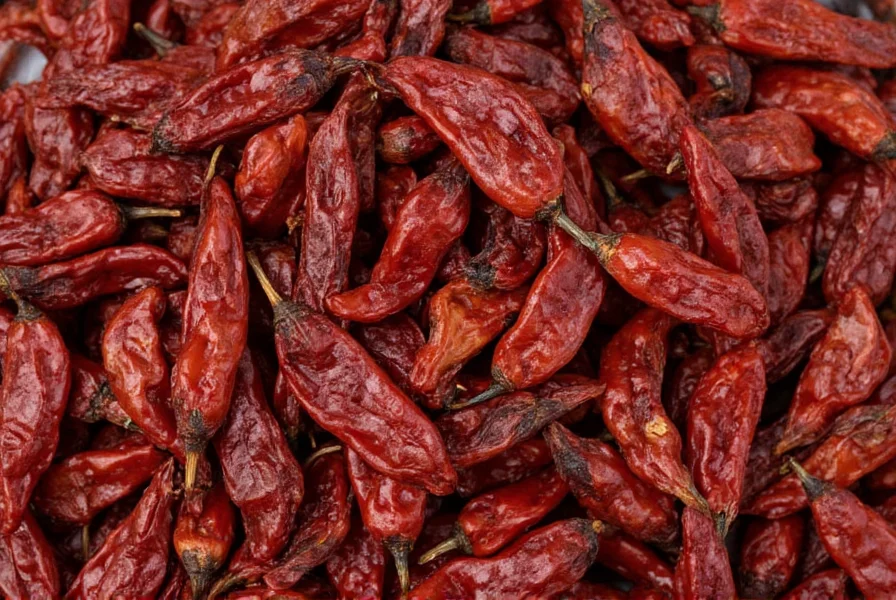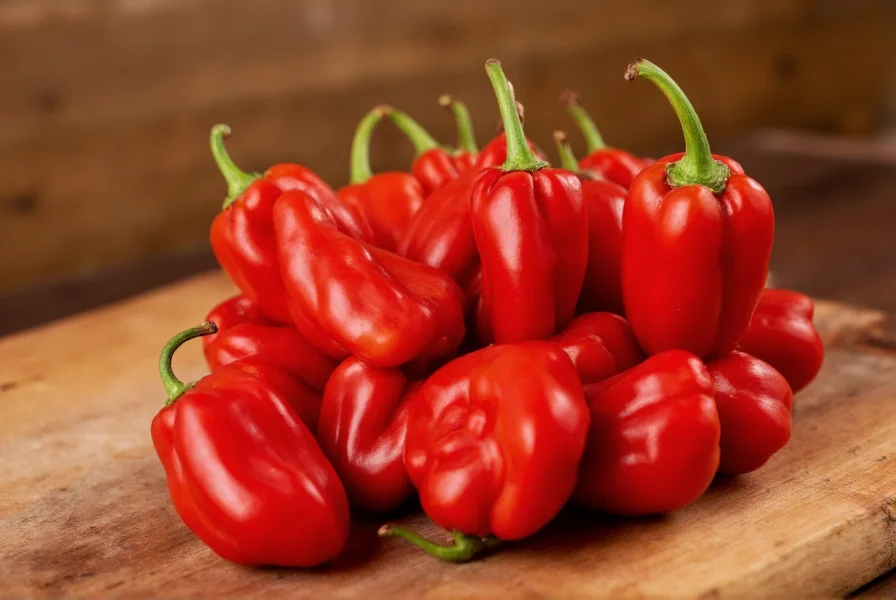When exploring Mexican cuisine, understanding chili guajillo characteristics proves essential for authentic flavor development. This dried pepper transforms ordinary dishes into culinary masterpieces with its distinctive taste and vibrant color. Unlike many chilies that prioritize heat, guajillo delivers nuanced flavor complexity while maintaining approachable spice levels.
Physical Characteristics and Heat Profile
Measuring 5-6 inches long with a smooth, thin skin, guajillo chilies display a distinctive deep reddish-brown hue when properly dried. Their heat registers between 2,500-5,000 Scoville Heat Units (SHU), placing them in the mild-to-medium range—significantly milder than cayenne (30,000-50,000 SHU) but slightly hotter than poblanos (1,000-2,000 SHU). This moderate guajillo chili heat level makes them accessible to most palates while still providing noticeable warmth.

Flavor Profile and Culinary Applications
The true value of guajillo lies in its complex flavor profile. When properly prepared, it offers notes of:
• Tangy green tea
• Dried berries
• Subtle citrus
• Light smokiness
• Earthy undertones
This complexity explains why chili guajillo vs ancho comparisons frequently arise among culinary enthusiasts. While both are popular dried chilies, guajillo provides brighter, fruitier notes compared to ancho's deeper, raisin-like sweetness. Chefs often combine them to create layered flavor profiles in traditional Mexican sauces.
Proper Preparation Techniques
For optimal flavor extraction, proper rehydration proves critical. Follow these professional techniques:
| Preparation Method | Time Required | Best For |
|---|---|---|
| Hot water soak (175°F) | 15-20 minutes | Sauces and moles |
| Dry toasting | 2-3 minutes per side | Enhancing nutty notes |
| Blanching | 30 seconds | Removing bitterness |
After rehydration, remove stems and seeds to control heat levels. The softened chilies blend smoothly into sauces without requiring additional straining—a significant advantage over some other dried chilies.
Storage Recommendations
Proper storage maintains guajillo's flavor integrity. Store dried chilies in airtight containers away from light and moisture. Under optimal conditions, they retain peak quality for 6-12 months. For extended storage, freeze dried chilies in vacuum-sealed bags for up to 2 years. Always check for mold or musty odors before use, as these indicate degradation.
Nutritional Benefits
Beyond flavor, guajillo offers notable nutritional advantages. One ounce (28g) provides approximately:
- 80% of daily vitamin A requirements
- 40% of vitamin C needs
- Significant capsaicin content with anti-inflammatory properties
- Dietary fiber supporting digestive health
Substitution Guidance
When seeking a guajillo chili substitute, consider these alternatives based on your recipe's requirements:
- Ancho + New Mexico chilies (1:1 ratio) - Best overall flavor match
- Pasilla - Similar fruitiness with slightly more heat
- Chiles de árbol - Use half amount for comparable heat with different flavor notes
- Smoked paprika + cayenne (10:1 ratio) - Pantry alternative for emergency substitutions
Remember that substitutions never perfectly replicate guajillo's unique flavor profile. For authentic Mexican dishes, seek proper guajillo whenever possible.
Signature Recipes Featuring Guajillo
Professional chefs rely on guajillo for these classic preparations:
- Salsa Roja - Blend rehydrated guajillo with roasted tomatoes and garlic
- Mole Rubio - The foundation of this "red mole" from Puebla
- Adobo Sauce - Essential for carnitas and tinga preparations
- Chili Colorado - Traditional beef stew featuring guajillo as primary chili
When developing guajillo chili recipes, remember that its flavor intensifies during cooking. Add gradually and taste frequently to achieve perfect balance.
Finding Quality Guajillo Chilies
Selecting premium guajillo requires attention to detail. Look for:
- Deep, uniform reddish-brown color (avoid faded or orange specimens)
- Smooth, unbroken skin without cracks
- Flexible texture (brittle chilies indicate age)
- Pleasant, slightly fruity aroma
For those wondering where to buy guajillo chilies, check Latin American markets, specialty spice shops, or reputable online retailers. Avoid pre-ground versions, as whole dried chilies maintain freshness significantly longer.
Common Questions About Guajillo Chilies
What does guajillo chili taste like compared to other dried chilies?
Guajillo offers a distinctive flavor profile combining tangy fruit notes with subtle tea-like bitterness and mild heat. Unlike ancho's deep raisin sweetness or chipotle's intense smoke, guajillo provides brighter, more complex fruit flavors with moderate warmth. Its unique combination of berry notes and tangy acidity makes it irreplaceable in traditional Mexican sauces where depth without overwhelming heat is required.
How do I properly rehydrate guajillo chilies for cooking?
Place dried guajillos in a heatproof bowl and cover with 175°F water. Weigh down with a smaller plate to keep submerged. Soak for 15-20 minutes until completely softened but not disintegrating. Drain, reserving 1/2 cup soaking liquid. Remove stems and seeds before blending. For enhanced flavor, dry toast chilies for 30 seconds per side before soaking. Never use boiling water as it creates bitterness.
Can I grow guajillo peppers myself?
Yes, you can grow mirasol peppers (the fresh form of guajillo) in suitable climates. They require 70-90 frost-free days, full sun, and well-draining soil. Start seeds indoors 8-10 weeks before last frost. Plants reach 2-3 feet tall with upright growth habit. Harvest when peppers turn bright red and feel firm. For authentic guajillo, allow harvested peppers to air-dry completely in a warm, dark place before use. Note that soil composition and climate affect final flavor profile.
Why does my guajillo sauce taste bitter?
Bitterness in guajillo sauces typically results from improper preparation. Common causes include: using boiling water for rehydration, leaving seeds/stems intact, over-toasting, or using aged chilies. To prevent bitterness, always use 175°F water, remove all seeds and stems after soaking, limit toasting to 30 seconds per side, and check chilies for freshness before use. If bitterness occurs, balance with small amounts of acid (lime juice) or sweetness (a pinch of sugar).
How does guajillo compare to California chilies?
While often confused, guajillo and California chilies differ significantly. Guajillo (mirasol variety) offers brighter fruit notes and moderate heat (2,500-5,000 SHU), while California chilies (New Mexico variety) provide earthier flavor with less complexity and similar heat levels. Visually, guajillo has smoother skin and deeper red color compared to California's slightly wrinkled texture and brighter red hue. In cooking, guajillo works better for complex sauces while California chilies suit simpler applications.











 浙公网安备
33010002000092号
浙公网安备
33010002000092号 浙B2-20120091-4
浙B2-20120091-4